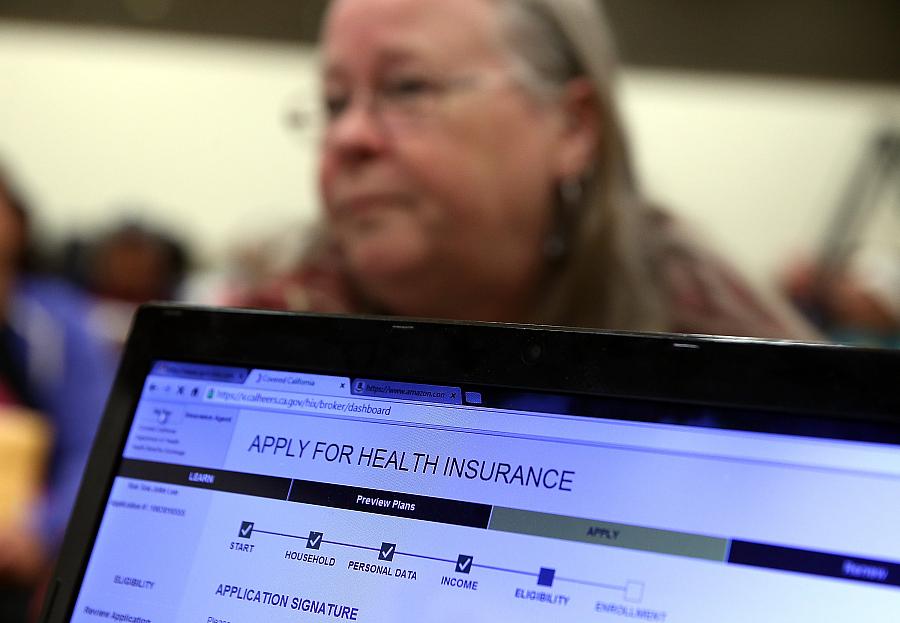How to cover Obamacare’s shaky insurance exchanges

A trio of health care experts offered an abundance of reporting tips, data sources and story ideas for covering the country’s turbulent health insurance exchange marketplaces in a Center for Health Journalism webinar this week.
“It’s a very active time for people who cover insurance,” said Katherine Hempstead, senior adviser to the executive vice president of the Robert Wood Johnson Foundation.
Along with Hempstead, who directs the foundation’s work on health insurance coverage, panelists included Chad Terhune, a senior correspondent for Kaiser Health News and California Healthline, and Ceci Connolly, president and CEO of the Alliance of Community Health Plans.
Ask insurers tough questions
When covering an insurance company’s rate increases, don’t let insurers simply blame President Trump or political uncertainty, said Kaiser Health News’ Terhune. Reporters should still closely examine the base increase companies say is necessary even if Congress fully supported Obamacare.
“We still need to scrutinize rate increases,” Terhune said. “Hold insurers accountable for their explanation.”
Reporters should ask questions such as: What is driving up the costs? Are more people going to the doctor and using prescription drugs, or are the prices of goods and services increasing? (Last year, Terhune wrote this piece, which explored the notion that California insurers “may be exploiting the outrage over high drug prices to artificially inflate their premiums.”)
Journalists should also look at what insurers are doing to control costs overall, he said. Are they making it cheaper to go to preferred hospitals? Do they have exclusive provider organization plans? Are they bundling payments? Pushing back on brand-name drugs? And, what are they doing to help consumers make better “shopping” decisions, such as promoting pricing transparency?
In articles on the individual marketplaces, panelists urged reporters to remind their readers of the big picture. While most Americans still get their insurance from their workplaces, people could end up seeking insurance in the marketplace if they’re laid off or decide to retire early. Reporters should note that most insurers are still experiencing soaring profits. And, even if federal subsidies also rise and lessen the impact of premium increases on consumers’ pocketbooks, readers should care that more of their tax dollars are going to health care instead of other vital goods, such as infrastructure or education, Terhune said.
Terhune advised journalists to approach Medicaid as a business story. If an insurer is going to exit the exchanges, should they still be allowed to participate in Medicaid contracts? New York, for instance, is requiring health insurance companies who want to participate in Medicaid plans to also be in the Obamacare market.
(New York has offered one answer to that question.) He also suggested digging into the intersection of immigration and health care.
For sourcing, Terhune suggested getting in touch with actuaries who are at the center of the industry and “trying to make sense of all of this chaos.” Health insurance agents are another overlooked source who can offer insight into what real people are thinking. Consultancies such as Mercer and Milliman are also useful for context.
More than anything, Terhune advised journalists to “get outside the bubble” and interview real people, including those who both support and oppose Obamacare or GOP plans.
Rate filings offer clues
As more states report insurance hikes, RWJF’s Hempstead discussed an important resource for reporters: the rate filings from carriers.
Along with rate increases, plan benefit changes, and insurers’ decisions about staying in a market, these public filings can also offer clues and insights into carriers’ thought processes.
For example, Blue Cross Blue Shield of North Carolina explicitly mentioned the differences in rate increases depending upon whether Congress fully funded the ACA. Similarly, insurers in Pennsylvania broke down potential rate increases according to possible scenarios — such as whether Congress repeals the individual mandate, cuts cost-sharing reduction subsidies or both.
Hempstead encouraged reporters to look at how policy decisions — such as whether a state expanded Medicaid — have affected its insurance market. Does a state have more people in “transitional” policies that are not ACA-complaint? Does it have a history of “limited coverage specialists”?
On a larger national level, journalists should keep an eye on the “out-of-the-box” ideas, such as California’s single-payer proposal or Nevada’s idea to allow those without insurance to buy in to the state’s Medicaid program.
Take the time to build relationships with insurers
Taking the time to build relationships with insurance companies and industry experts will come in handy when it’s time for the harder conversations, said Ceci Connolly, president and CEO of the Alliance of Community Health Plans and a former reporter for The Washington Post herself.
Connolly suggested contacting former state Medicaid officers who might be working at think tanks or consultancies. Those who’ve recently left government positions might be freer to talk candidly. Another good resource is the National Committee for Quality Assurance, a not-for-profit organization working to improve health care quality, and J.D Power for insurance ratings and reports.
Connolly cautioned reporters to be mindful about distinct Medicaid populations: “Everyone is putting Medicaid beneficiaries into one category but there are so many distinct sub groups.” Similarly, she urged reporters to ask private insurers about their member profiles.
In a time when everyone seems focused on rate hikes, think about what’s missing from the conversation — such as whether the current health system is going to remain entrenched in fee for service, as Connolly fears it might.
“Step away from the Washington drama,” Connolly told reporters. “Zig when everyone else zags.”
**
Watch the full webinar presentation here:

